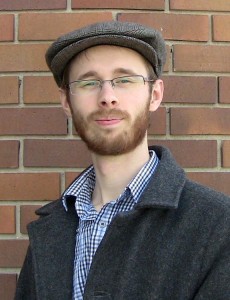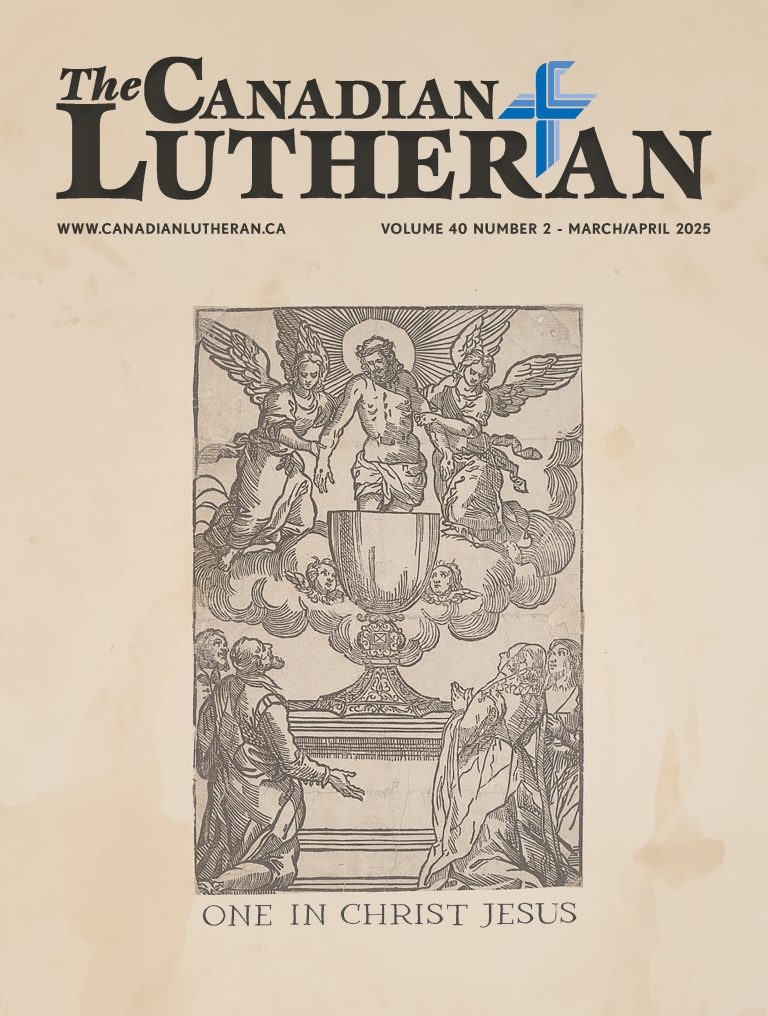Table Talk: God in Three Persons, Blessed Trinity
By: Mathew Block
 Few mysteries in the Christian faith can be said to rival that of the nature of the Godhead. We confess God to be three distinct Persons and yet one God. But how can God be three and yet one? Like all good Lutherans, we ask: “What does this mean?”
Few mysteries in the Christian faith can be said to rival that of the nature of the Godhead. We confess God to be three distinct Persons and yet one God. But how can God be three and yet one? Like all good Lutherans, we ask: “What does this mean?”
The early church wrestled with the same question. In fact, it took several centuries for Christians to unpack what the Scriptures teach about the nature of God. The fruits of these efforts are summarized in the great ecumenical creeds: the Apostles’ Creed, the Nicene Creed, and the (too often neglected) Athanasian Creed.
The first two of these creeds teach us much about the unique identities of the Persons of God. The Apostles’ Creed explains that God is three Persons: the creator Father; the Son, Jesus Christ, who redeemed us; and the Holy Spirit. The Nicene Creed expands on these earlier teachings, providing greater insight into the relationships between the Persons of the Holy Trinity: the Father begets the Son, we read, Who is “of one substance with the Father.” Of the Holy Spirit, “the Lord and giver of life,” we learn that He “proceeds from the Father and the Son.”
We must be careful not to misunderstand the words “beget” and “proceed” to mean the Son and the Holy Spirit came into existence after the Father. The authors of the creeds were clear that the Father, Son, and Holy Spirit have always existed together from eternity (“before all worlds”). Nor should we think the words imply different levels of power or prestige. “In this Trinity none is before or after another; none is greater or less than another,” explains the Athanasian Creed. “But the whole three Persons are coeternal with each other and coequal.” The Trinity may relate to each other in different ways, but they are all equally—and in perfect unity—God.
Just as the Father, Son, and Holy Spirit have different relationships with one another, they also relate to humanity in different ways. The 2017 Explanation to Luther’s Small Catechism summarizes their unique roles in this way: “The Scriptures ordinarily speak of the Father as creating us, the Son redeeming us, and the Holy Spirit sanctifying us.”
While one Person takes centre stage in each of these activities, all three nevertheless work together in these and every other activity. In creation, for example, it is God the Father who makes heaven and earth (Genesis 1, Deuteronomy 32:6). But God the Son is there also, as the Word which speaks everything into existence and sustains it (John 1:1-3, Colossians 1:15-17). God the Holy Spirit participates too as the breath upon the deep (Genesis 1:2), the breath which gives life to creation (Genesis 2:7). The three Persons work in different ways, yet all together, all for one purpose.
The creation of humanity makes this cooperative work in the Godhead even more explicit. “Let us make man in our image,” God says, addressing the other Persons of the Trinity. These words “us” and “our” are among the first hints in Scripture of the triune nature of God—a mystery that only deepens the more we read.
We must be careful not to misunderstand this text or other parts of Scripture as if they implied there were three different gods who simply cooperate together. Scripture makes it clear elsewhere that the Trinity, in a way incomprehensible to human reason, is one eternal being: “Hear, O Israel: The Lord our God, the Lord is One” (Deuteronomy 6:4). The Athanasian Creed explains: “The Father is God, the Son is God, the Holy Spirit is God; and yet there are not three Gods, but one God.”
In this issue, we explore the unique nature and work of the Persons of the Holy Trinity. Rev. Warren Hamp discusses God the Father (PAGE 6), Rev. Dr. Stephen Chambers the Son (PAGE 9), and Rev. Kurt Reinhardt the Holy Spirit (PAGE 12). But while we study the three Persons of the Trinity individually, we must not imagine them as working independently one from another. Instead, as St. Athanasius has written, we must remember that in all things the Trinity works together, every act proceeding “from the Father through the Son in the Holy Spirit” in perfect unity. In every act—creation, redemption, sanctification—God works as One, because He is One. The Persons are distinct and yet of one substance. They operate in different ways and yet always in concert.
Those wishing to reflect more deeply on the Trinity do well to start with the Athanasian Creed. Athanasius spent his life defending and explaining the Bible’s teachings on the nature of God. The creed, while not written by Athanasius himself, faithfully reflects the fruits of his studies as well as others.
At the same time, let us not treat the mystery of the Trinity as something simply to be studied. The Trinity is God, and God is to be praised, thanked, and adored. “The Trinity in Unity and United in Trinity is to be worshipped,” says the Athanasian Creed. God help us to worship Him as we ought.
Mathew Block is editor of The Canadian Lutheran magazine and communications manager for the International Lutheran Council.




